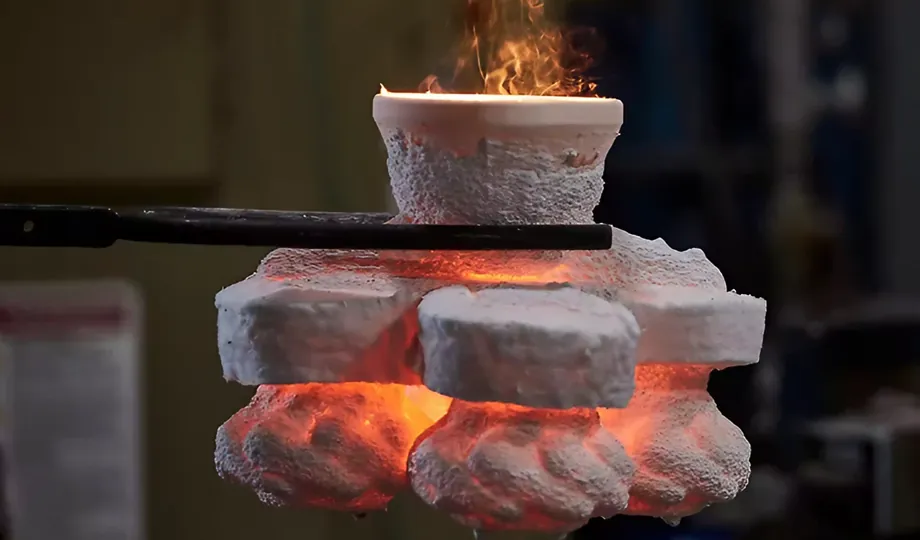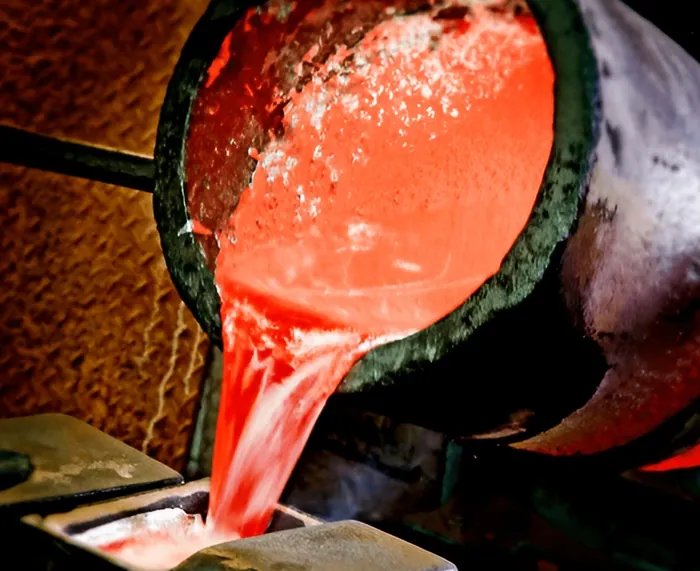Investment Casting: Freedom in Design with Minimal Draft Angles
Author: SAIVS Date Published: May 13,2024
Draft Angles are a necessary evil in many casting processes, limiting design freedom and adding complexity to post-casting machining. Investment Casting, however, offers a significant advantage in this regard: the ability to create parts with near-zero draft angles.

Why Draft Angles are Used in Casting
A draft angle is a slight taper applied to vertical faces of a casting pattern or mold. It allows for easier removal of the solidified cast part without damaging the mold or the casting itself. This becomes crucial in processes like Sand Casting, where the mold itself is packed with sand particles. Adequate draft angles ensure these particles remain in place during pattern removal. Typical draft angles in sand casting are around 1.5 degrees.
Investment Casting: Minimizing Draft Angles
Investment casting takes a different approach. The process involves creating a wax replica of the desired part, coated in a ceramic shell. After the wax is melted out (the "lost wax" process), molten metal is poured into the ceramic shell cavity. Once solidified, the shell is broken away to reveal the final cast part.
This method eliminates the need for draft angles to release the cast part itself. The ceramic shell breaks away easily, regardless of angles. However, there's still the matter of removing the initial wax pattern from its mold.
Draft and Wax Patterns
Investment casting utilizes wax with a high shrinkage rate. This natural shrinkage allows the wax pattern to pull away from the mold walls during solidification, enabling easy removal without draft angles.

Exceptions: When Draft is Needed
While draft angles are generally not required, there are a few situations where they might be necessary:
Insufficient Wax Shrinkage: In rare cases, the wax shrinkage might be inadequate for smooth pattern removal. The designer can then either reorient the pattern in the mold or introduce minimal draft angles on specific surfaces.
Molding Cores: Cores, used to create internal features like cavities, can be made from either soluble wax or ceramic. Soluble wax cores typically don't require draft due to shrinkage. However, ceramic cores, which remain in the mold and become part of the ceramic shell, might need draft angles on some surfaces for proper release.
Conclusion
Investment casting offers a significant advantage in design freedom by minimizing the need for draft angles. This allows for the creation of parts with complex geometries and sharp corners, reducing the need for additional machining. Understanding the role of draft angles and how investment casting overcomes this limitation is essential for part designers seeking a near-net shape Manufacturing Process.
Why Choose SAIVS™ as Your Supplier?
1.Superb Quality Control Management
At SAIVS, we take pride in our perfect quality management systems and procedures, which guarantees the excellent performance of all our producs, being a professional Investment Casting | Die Casting| Sand Castingmanufacturer in China.
2.Rich Production Experience
With 20 years of experience in production, SAIVS has a deep understanding of the market and trends, and strives for continuous research and innovation. This has created advantages in both the product's performance and appearance.
3.Competitive Prices
As a Chinese factory committed to becoming the most cost-effective Investment Casting | Die Casting| Sand Castingexporter in China, SAIVS provides high-quality products at advantageous prices. By lowering costs and increasing efficiency, we ensure that our customers receive the best possible value for their investment.
4.Perfect After-sales Service
At SAIVS, we strive to provide superior customer service that meets and exceeds expectations. We are always available for any questions or concerns you may have, and we stand by our commitment to providing excellent after-sales support.
Related Posts
-

When to use investment casting in automotive
Investment casting offers several key applications within the automotive sector. Here are some notable areas where investment casting is commonly utilized:Engin...
-

Steel CNC manifold blocks in hydraulic cylinders: benefits and maintenance
1. What is a steel CNC machined manifold block?A steel CNC machined manifold block is a component used in hydraulic cylinders to regulate the flow of fluids. It...
-

Methods to Reduce Wear of Sliding Metal Components
This article explores the causes of wear and galling in sliding metal components. It also presents effective prevention methods and design optimization, to redu...
-

Porosity Issues in Aluminum Die Castings: Formation, Types, Effects, and Solutions
This article aims to provide a comprehensive overview of porosity issues in aluminum die castings.
-

Conquering Casting Shrinkage: A Guide to Flawless Metal Parts
This article explores types of shrinkage, and solidification, and how to control them for high-quality castings.
-

Safety Guidelines for Precision CNC Machining
This comprehensive guide covers training, PPE, machine maintenance, proper setup, emergency procedures, and more to ensure a safer and more efficient manufactur...

